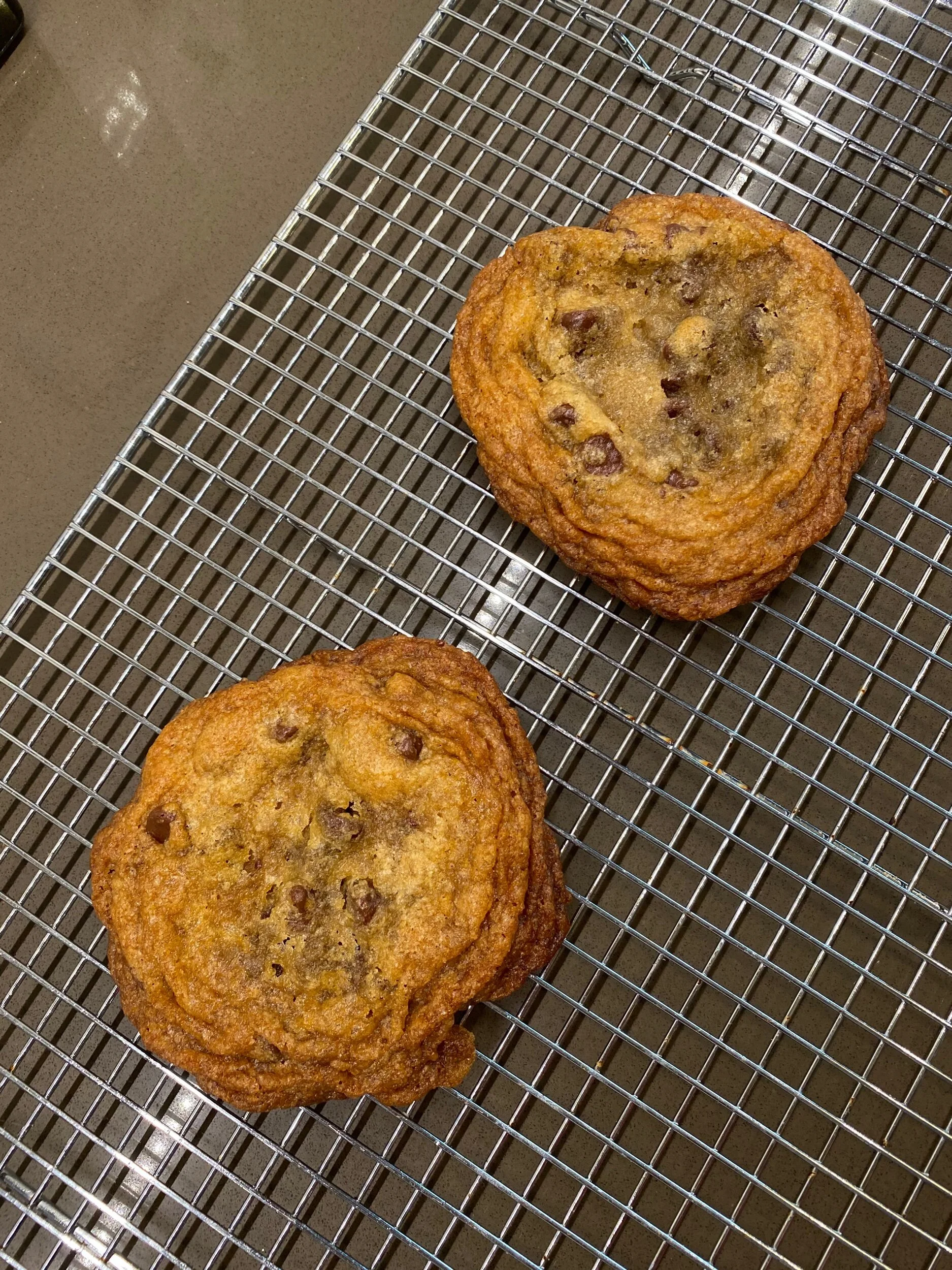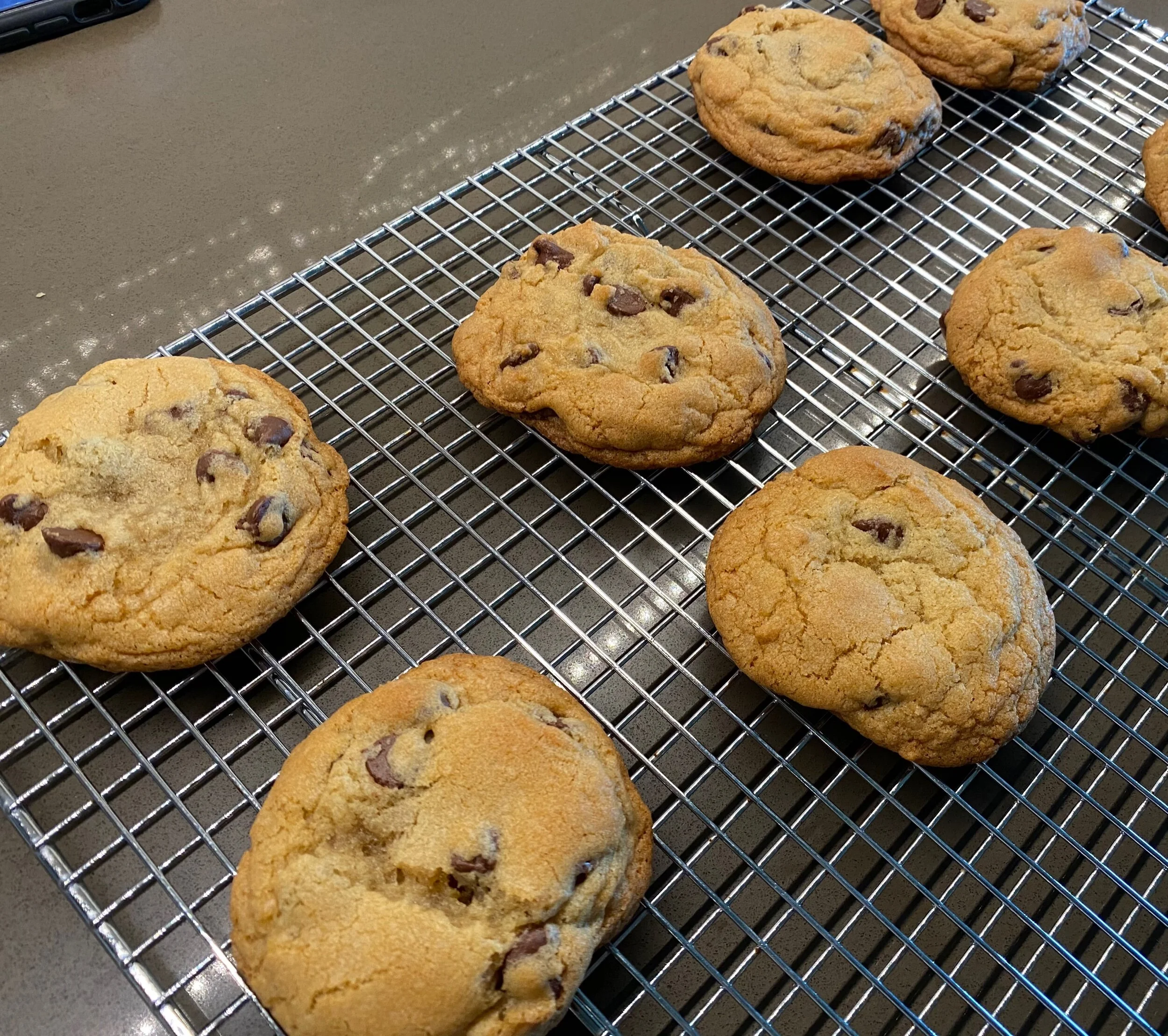Making The Best Chocolate Chip Cookie Recipe - Part 2
If you missed out on part 1, click here to read it! I talk about sugars, butter, and weighing your flour with a scale. Very important stuff for us cookie scientists!
Now that you know more than you need to about sugar and butter when it comes to cookies it’s time to learn even more. Now we’re moving on to baking soda versus baking powder, flour, and salt. Every component in a cookie recipe plays an important part and effect the texture, size, and thickness of your cookies. Let us dive in!
Does it Matter if I Use Baking Soda or Baking Powder?
Yes! It does matter. They are not direct substitutes! If you want the simplified version of these two, both are leaveners (a base) that cause a chemical reaction when introduced to an acid. When it comes to cookies, our acid is going to be brown sugar. When the base and the acid react, they create carbon dioxide and cause lift in baked goods.
A little more about baking soda, do not think you can add large amounts to get lift! Eventually, you hit a point where your baked goods will taste like soap or metal. Not good! Baking powder is made up of baking soda and cream or tartar. On the can of baking powder, you might notice it says double acting. That is because when baking powder comes in contact with a liquid, it becomes activated for the first time. The second time it is activated is when you put your cookies into the oven to bake. The heat causes this second reaction.
Adding both helps counteract the baking soda covering up the acid in the brown sugar. You still get that slight tangy flavor when you add in baking powder as well. This also contributes to browning and overall color of the cookie. These two ingredients provide much more than just the lift in a cookie!
Finding the Right Balance of Flour in Your Recipe
Many people ask what kind of flour to use for their cookies, I always stick with all purpose. The percentage of protein in all purpose flour is perfect for cookies. You are better off tweaking other components in the recipe to achieve a different texture. It is important to find the right balance of flour to liquid in your cookie, because too much flour and you get a thick, dry, flavorless cookie. On the other hand, if you use too little flour, you’ll probably end up with cookie brittle instead.
Flour holds the shape of our cookie and determines whether the cookie turns out chewy or crumbly. A lower proportion of flour to fat will lead to a chewier cookies since the sugar and butter will be allowed to shine! A higher proportion will lead to more of a scone texture- dry and crumbly. I personally like a chewy cookie, but I do enjoy a good chocolate scone once and awhile.
The cookies pictured on the left have a low ratio of flour to butter. They were thin, buttery and very crispy. On the right had a high ratio of flour and had a dry crumbly texture.
Salt is a Finicky Monster
No one likes salty cookies. When you bite into a cookie, you want the sweetness of the sugar and chocolate to come through…not salt. It is important to adjust your salt in your recipe depending on what kind of butter you use. Most non-cooks/bakers use salted butter at home. It makes sense, the shelf life is far longer because the salt acts as a preservative.
The National Dairy Council says that salted butter generally contains 1.6-1.7% of salt, but companies can use however much they want. Most companies average between 2-4%. So, there is a lot of variance when it comes to different dairy companies. That is why you must be careful and adjust your additional salt accordingly.
If you want a fancy addition of sea salt sprinkled on top of your cookies, you will also need to adjust your salt in the recipe down accordingly!
After the clump of information thrown your way in part 1, I wanted to keep this one a bit shorter! Remember, if you want to use my recipe, I list it in part 1. At the end of this, I will break down my entire process.



